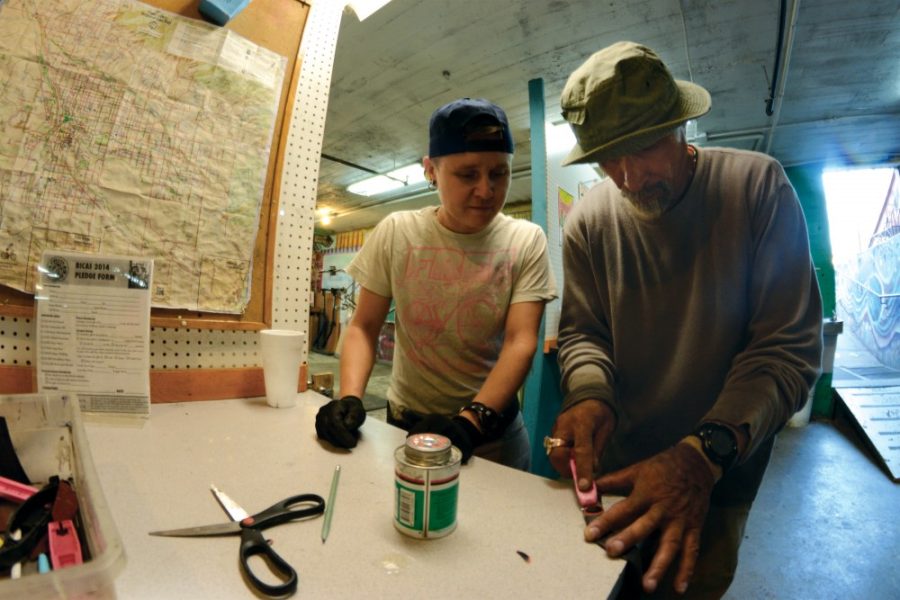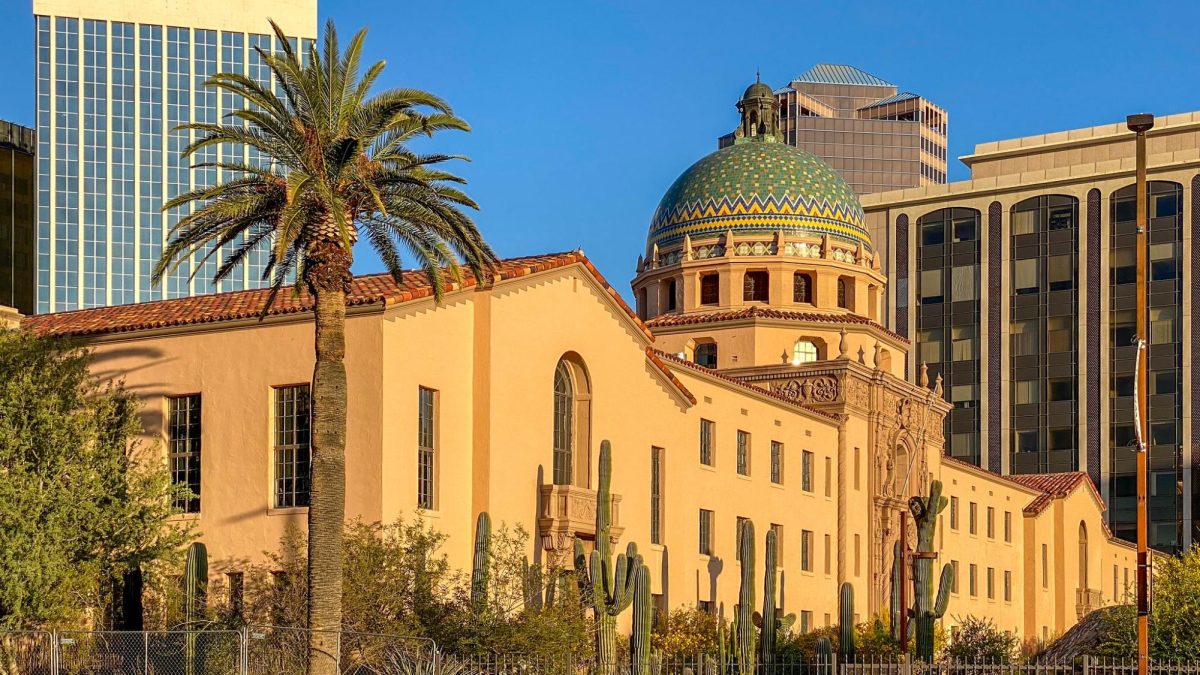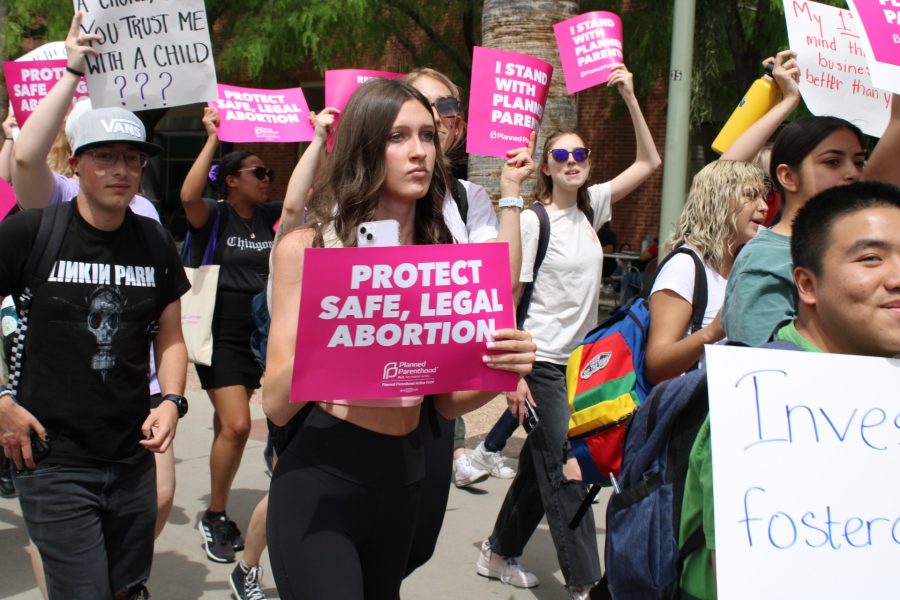A colorful, spray-painted building occupies an otherwise nondescript lot in Tucson’s Dunbar Spring neighborhood. The building, surrounded by a chain-link fence, beckons passers-by to enter with an artistic sign that reads “BICAS” next to a drawn arrow, pointing to the open gate.
Welcome to Bicycle Inter Community Art & Salvage, commonly known as BICAS. A collectively run nonprofit organization, BICAS was founded as Bootstraps to Share of Tucson and is still officially referred to by the name, according to its articles of incorporation.
At the bicycle collective, members of the community can work hours in the shop in order to earn credit toward buying parts or a complete bicycle, said Jesus Urbina, a BICAS cashier of around three years. The organization aims to help those who might not have the means to afford transportation earn it for themselves.
“It feels great to help people,” Urbina said.
According to data gathered by the National Center for Charitable Statistics, the number of nonprofit organizations in Arizona has increased by 22.7 percent between 2003 and 2013, which is nearly double the nationwide increase of 11.8 percent in the same time frame.
Michael Mandel, a lecturer in business communication and associate director of Eller Social Innovation for the UA Eller College of Management, said that this trend reflects what he sees at work at the local level in Tucson.
“There’s a clear need. Tucson is one of the poorest cities of its size in the country, and the people who live here definitely recognize there are a unique set of needs attached to that level of poverty,” Mandel said.
Though he saw a substantial dip in nonprofits around 2008 as a result of the economic downturn, Mandel said that the nonprofit sector in Tucson has largely recovered, something he largely attributes to individuals who donate to charitable organizations.
“There is a very generous donor base within the city of Tucson and the surrounding Pima County area who want to see people succeed throughout the region,” Mandel said.
BICAS’ organizational model, in particular, sets it apart from many nonprofit organizations through its collectively run structure.
“A collectively run nonprofit is an organization that seeks to improve the conditions, in some way, of their local community through a management or organizational structure in which everybody has an equal say and equal voice,” Mandel said.
Urbina agreed that the collective nature of BICAS is a major reason for the organization’s success.
“I seem to find it a lot easier, like more comfortable, to say what you need to say, be more comfortable with it and actually have a word and a voice in what you feel is best,” Urbina said.
There are challenges, however, with the collective model that make it unsuitable for use by every socially driven organization, according to Mandel.
“The major disadvantage that I could see with that structure is it can lead to slower decision making,” he said. “More deliberate decision making isn’t a bad thing, but it can become a bad thing when it takes too long to make a decision, particularly in response to some kind of new opportunity or new threat that arises to the organization.”
However, at the grassroots level, the model does work, as evidenced by BICAS’ now 26-year run in the Tucson community.
“Honestly, the people that work at a collective are mostly the people that don’t like to be told what to do by one person—like a hierarchy, like one specific boss,” Urbina said.
Mandel agreed with the sentiment that a collective is sometimes a worthwhile model, despite its drawbacks.
“There’s definitely a place for them. Every organization needs to make those decisions for themselves about what structure is going to be most effective in achieving their mission,” Mandel said. “For some smaller organizations, a collective process makes more sense than something hierarchal. But it has to really align with the values of the constituent members of the organization.”
As for the community-driven bicycle and art collective BICAS, Urbina finds value in the structure, as well as the work itself.
“That’s a great feeling, watching somebody come in with nothing, working a couple days, a couple hours, and then leaving with a bike that they can ride around to get around to their homes or their work,” Urbina said. “It just feels nice.”
Follow Alex McIntyre on Twitter









